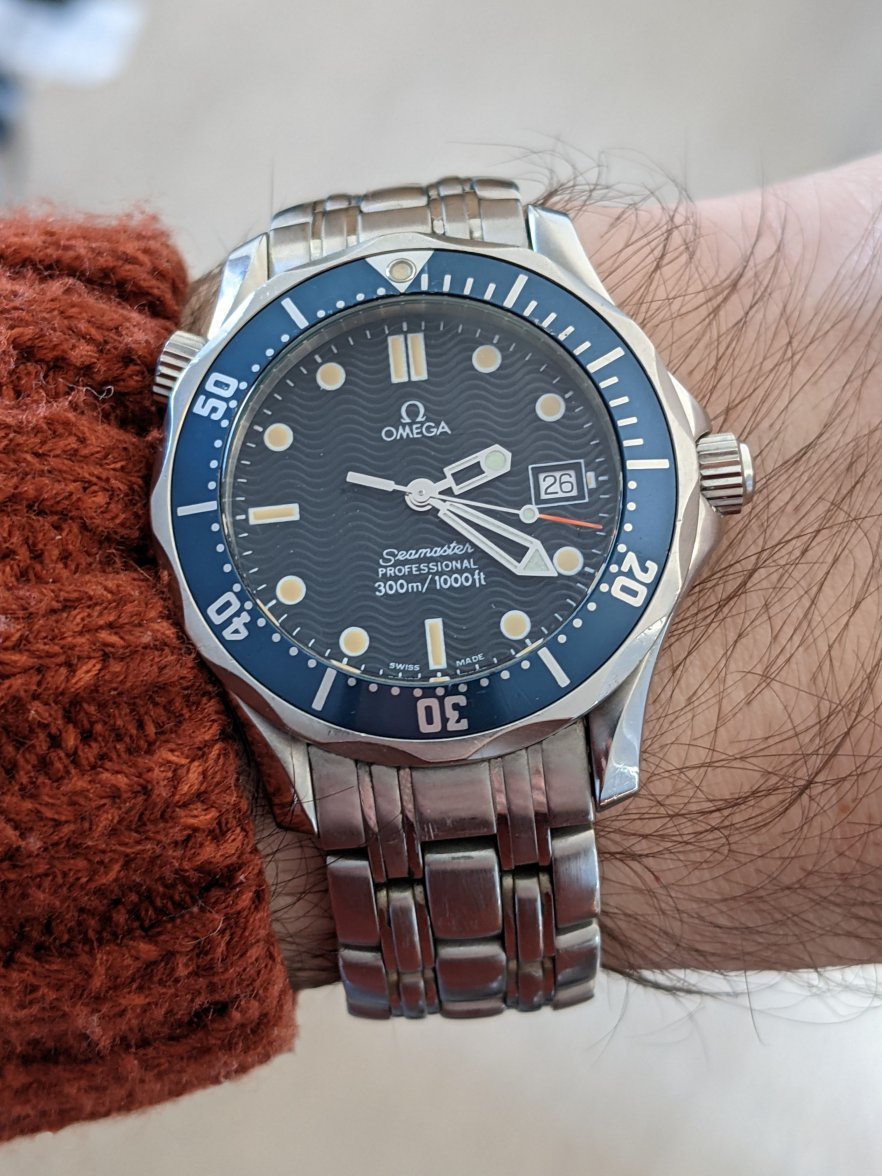- Posts
- 4
- Likes
- 5
brandon_o
·I learned a lot about the 2541.80 before purchasing to ensure I bought a good, genuine model. I recently purchased a 2541.80 after waiting to see one in person. I've since discovered an oddity with the dial and serial number year that doesn't make sense to me. I'm hoping someone here might be able to help me understand the situation.
It's my first Omega, and I was pretty certain it was authentic. Seller was reputable, I've never seen a fake of a 2541.80 reported. Typical giveaways on other model fakes such as date window, font of dates, sharp corners of bezel numbers, position of the helium valve, all look correct. When I purchased it, I knew the dial was the Luminous version, so I expected it to be 1998 or newer. What I didn't realize at the time of purchase was that the 5553xxxx serial number meant it was a 1995-1997 era, which used Tritium.
I'm not sure if it may have had a dial replaced. Its Luminova has a patina, as expected for a 20+ year-old watch. It is very bright for only a few seconds after using a UV light, fades almost entirely within 10 seconds, and basically nothing left after a minute.
The only oddities I noticed at purchase time were the brushing marks on the sides of the watch and the circular brushing on the case back were not there, but I figured this was due to someone over-polishing it. I also wondered if the bezel and/or bracelet were replaced because they have less signs of wear yet the watch had been polished extensively. I'd like to know what others think of the dial vs serial dating and its condition.
I'll attach photos of the watch in various lighting conditions to show details and flaws. Many of the photos are max zoom with the phone camera, which seems to have caused some oddities in the photos, let me know if you'd like other specific photos.
Thanks.
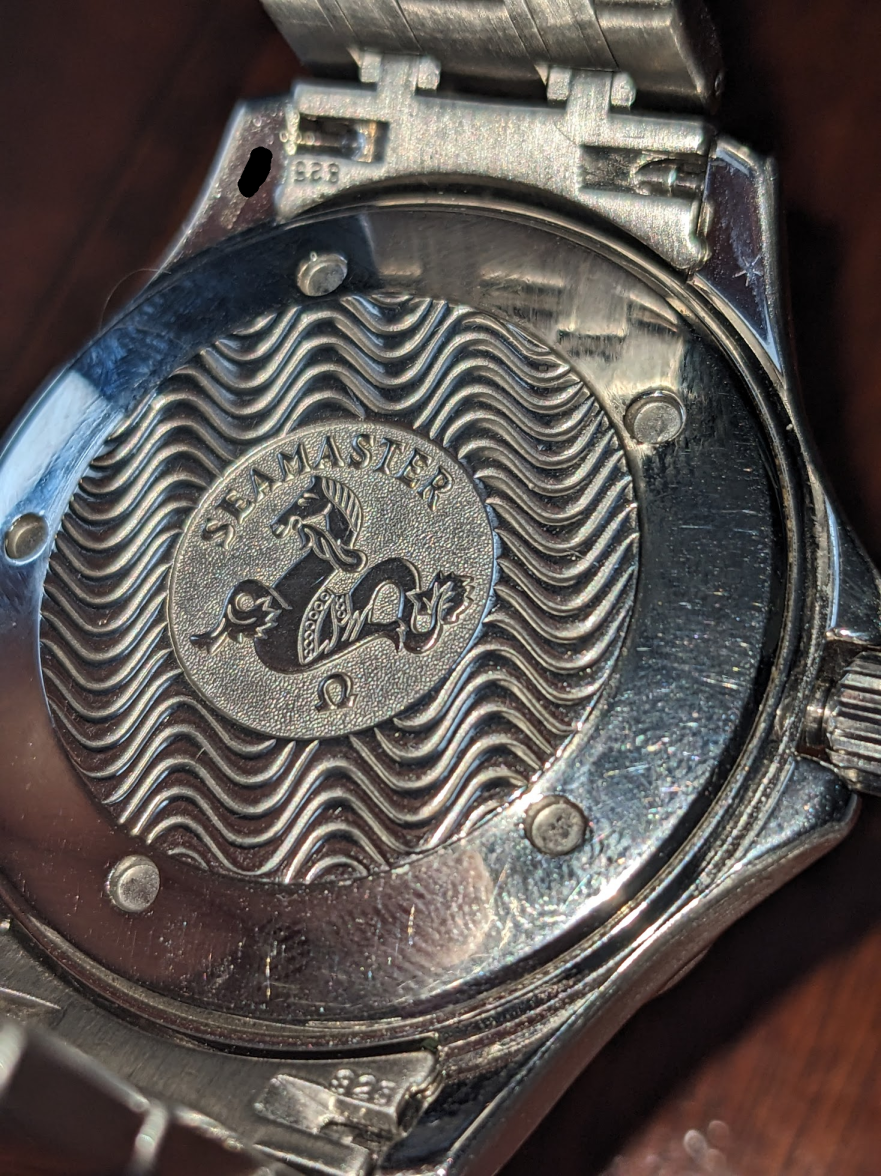
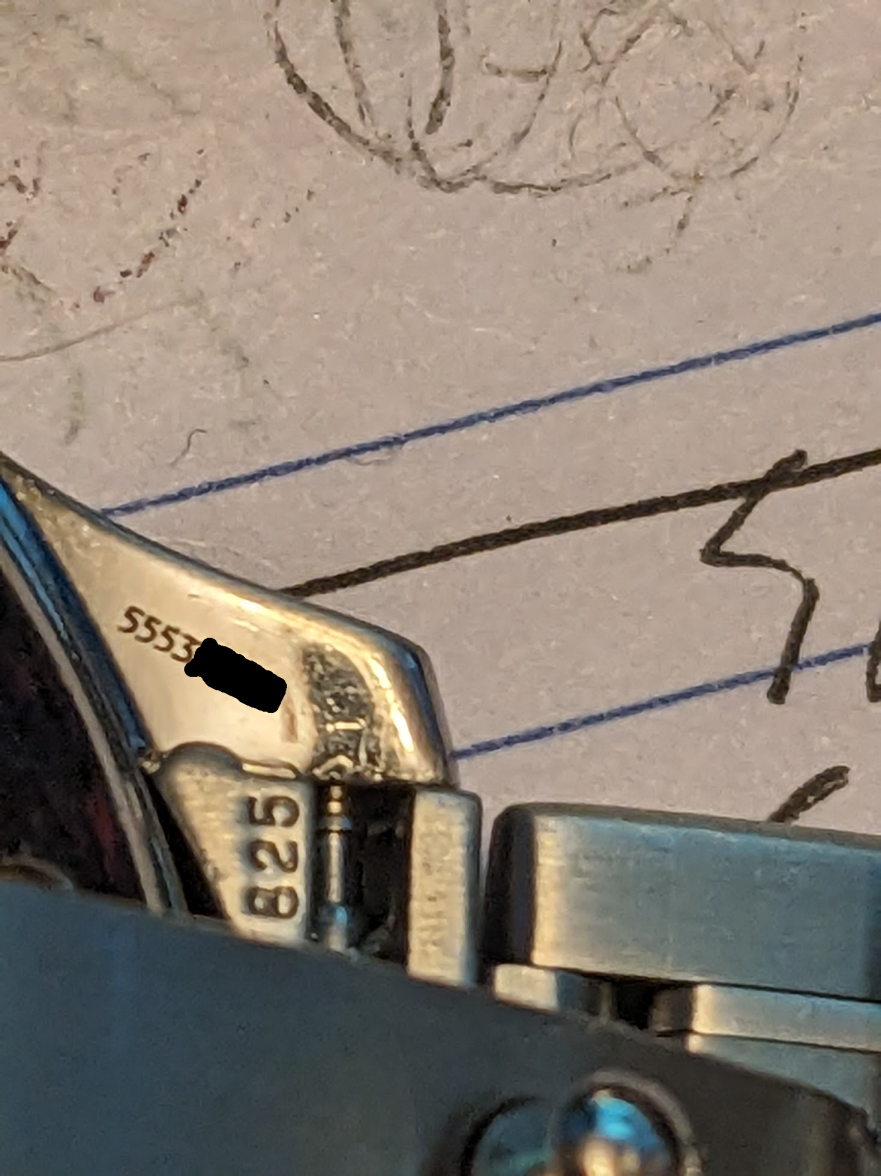
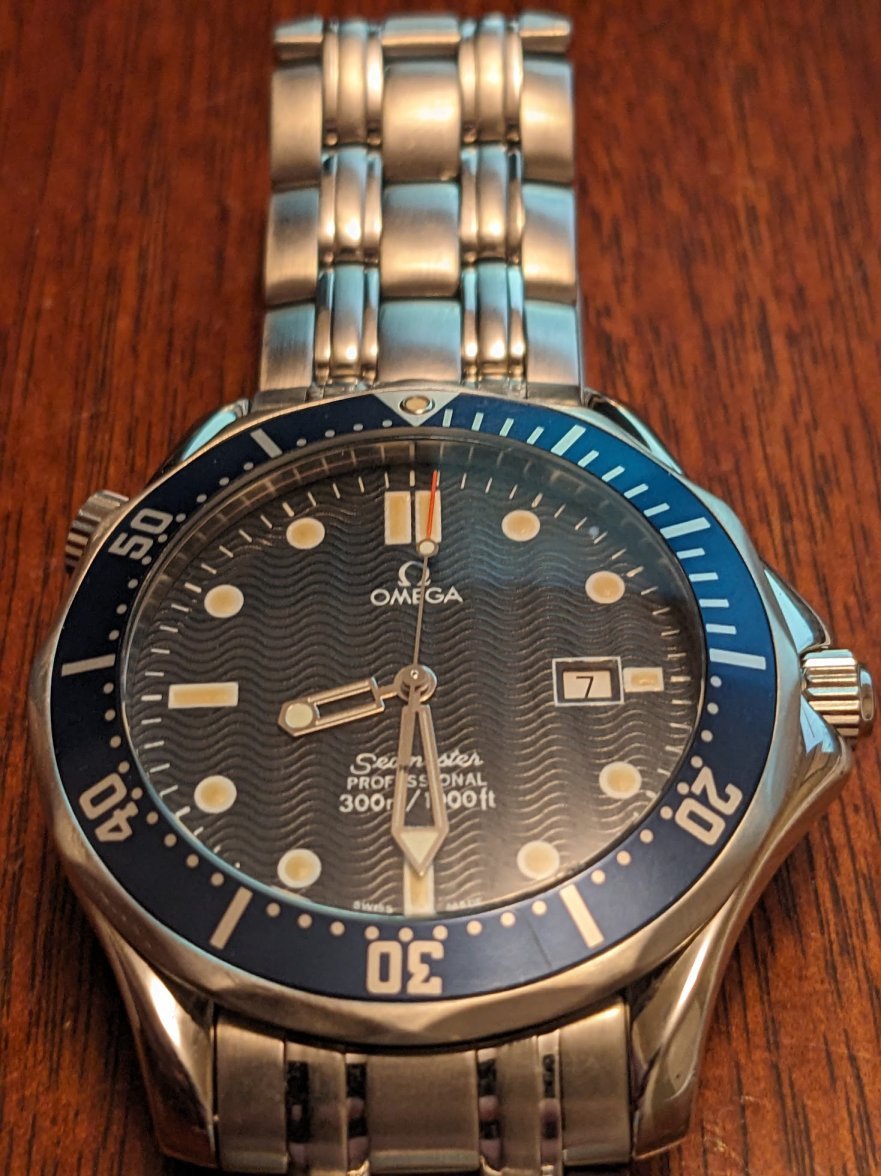
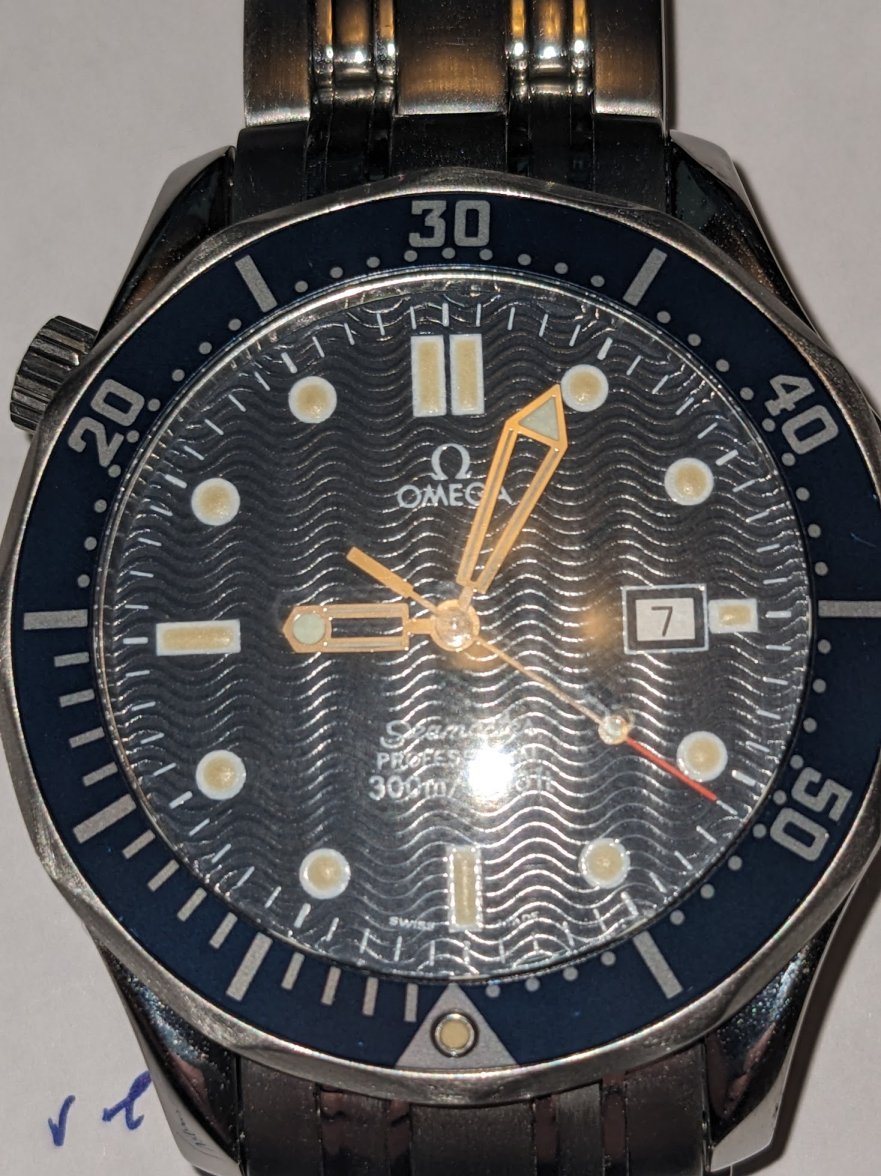
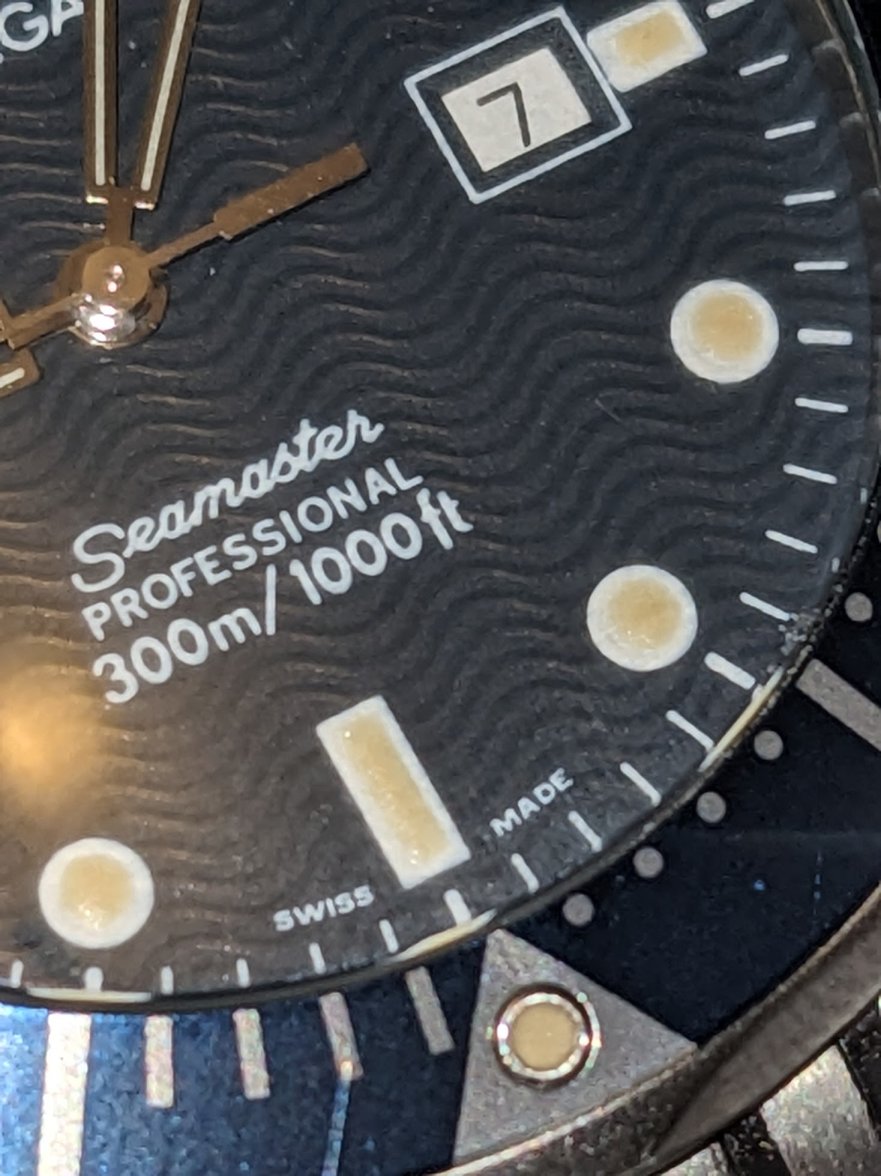
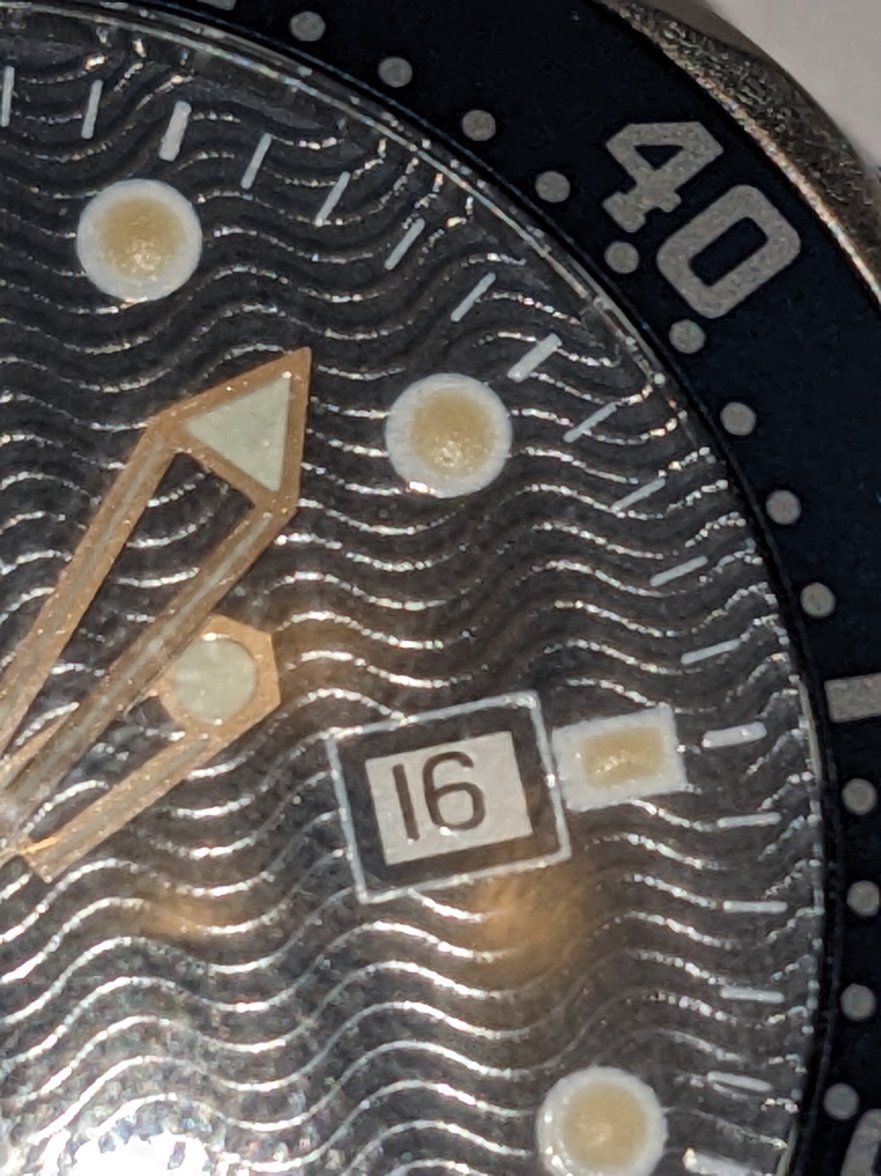
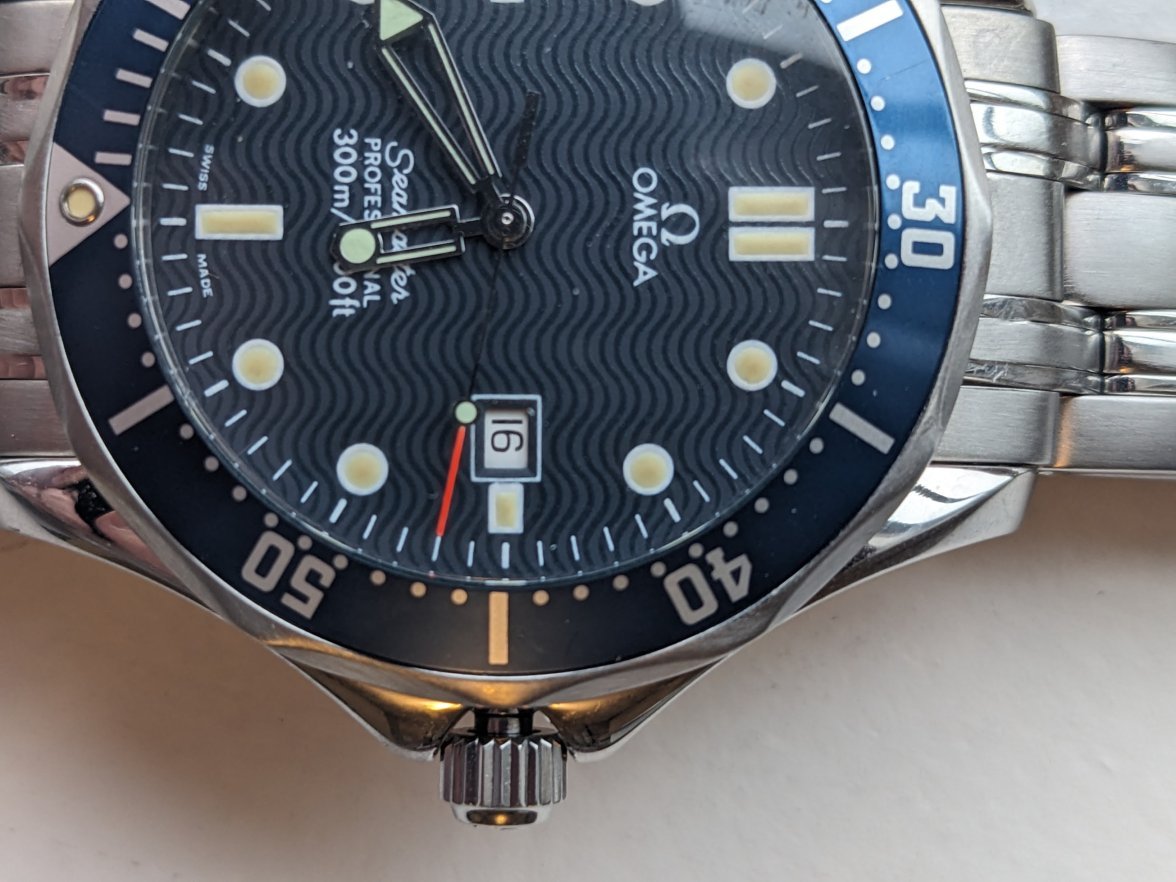
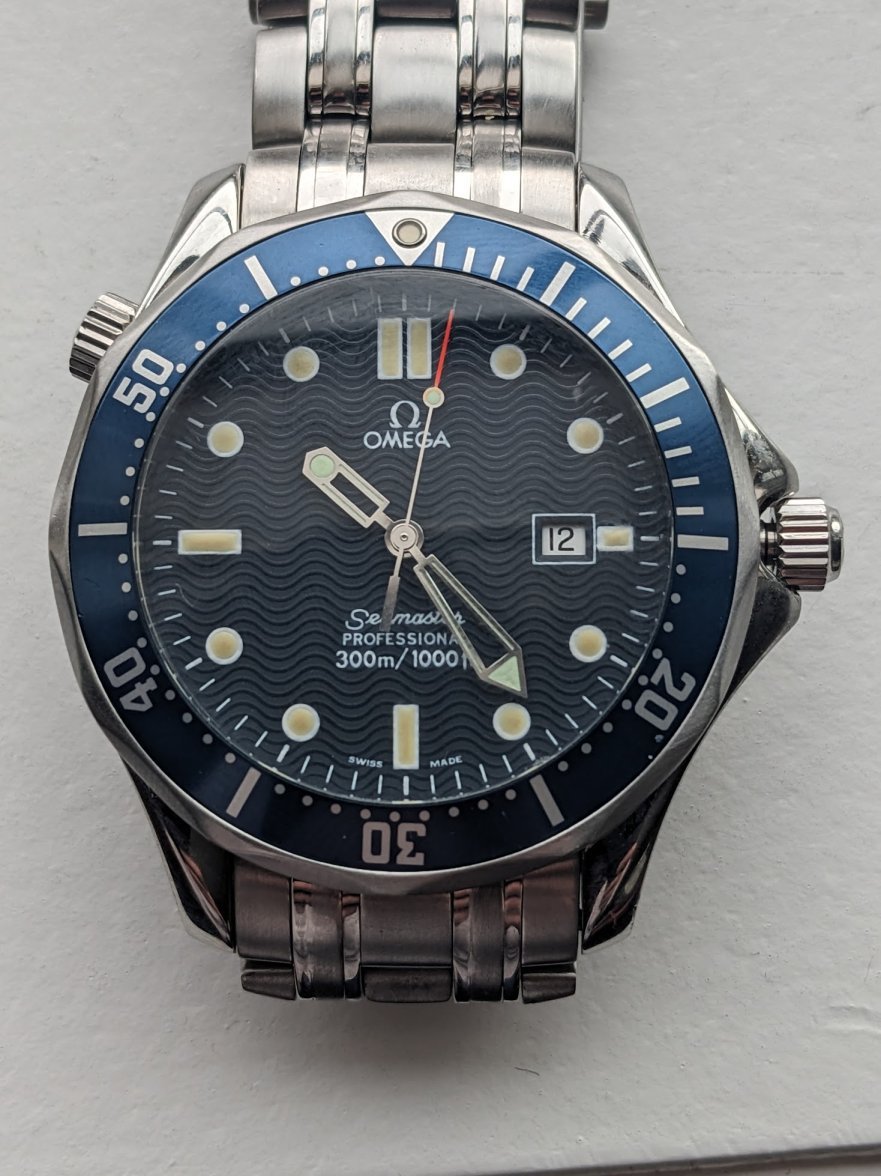
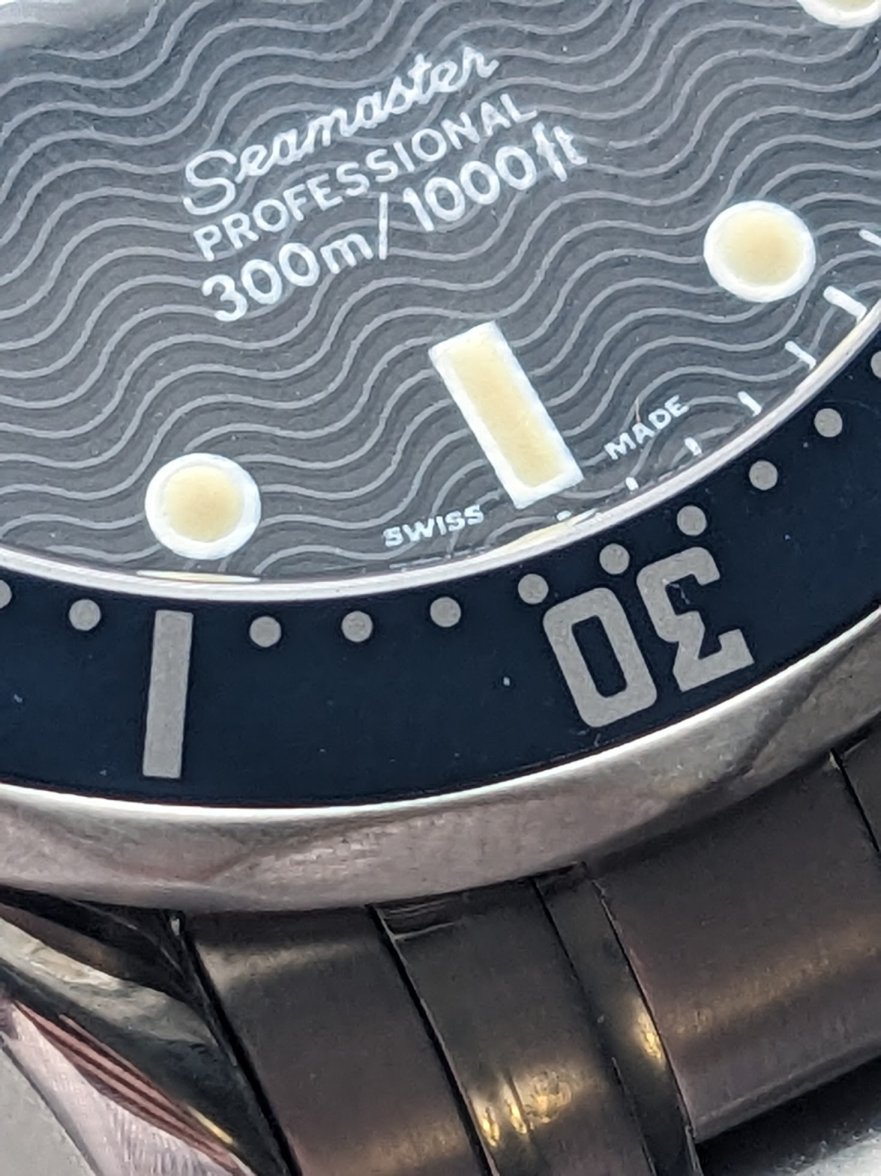
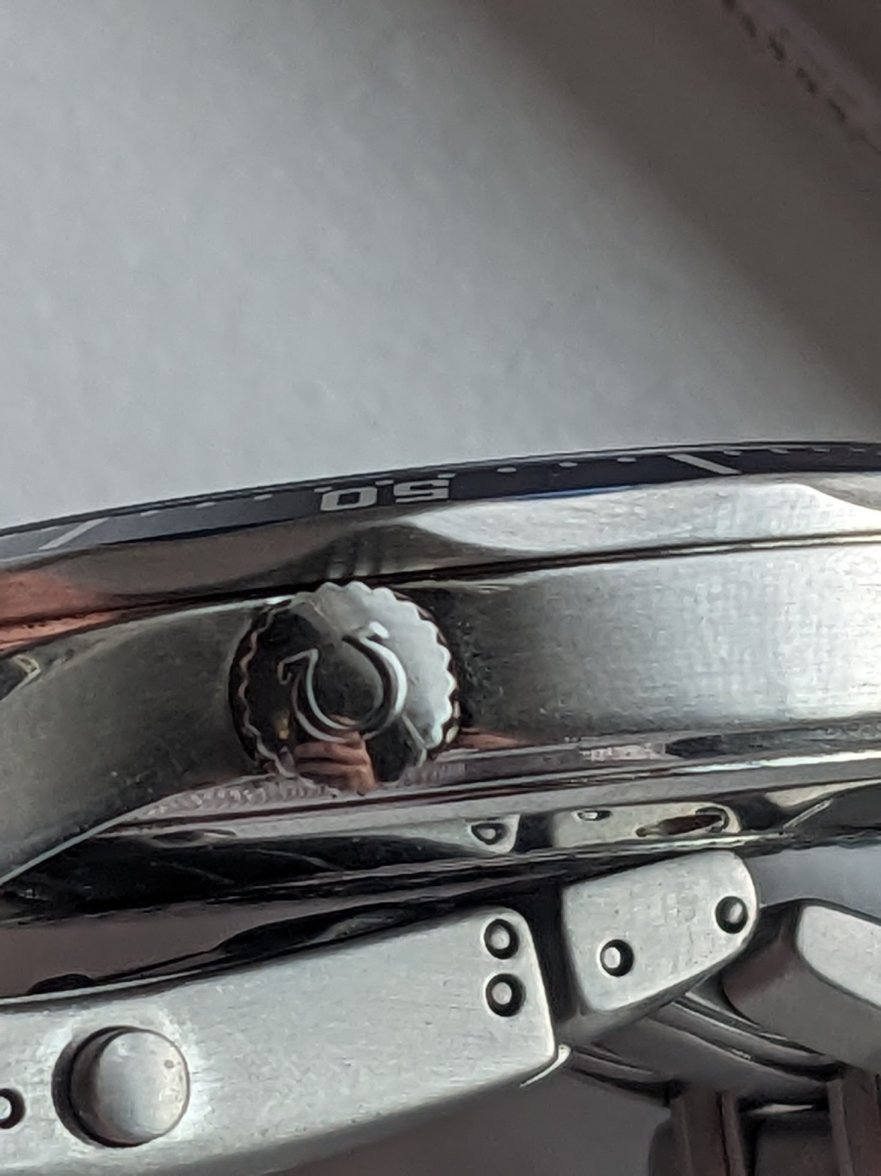
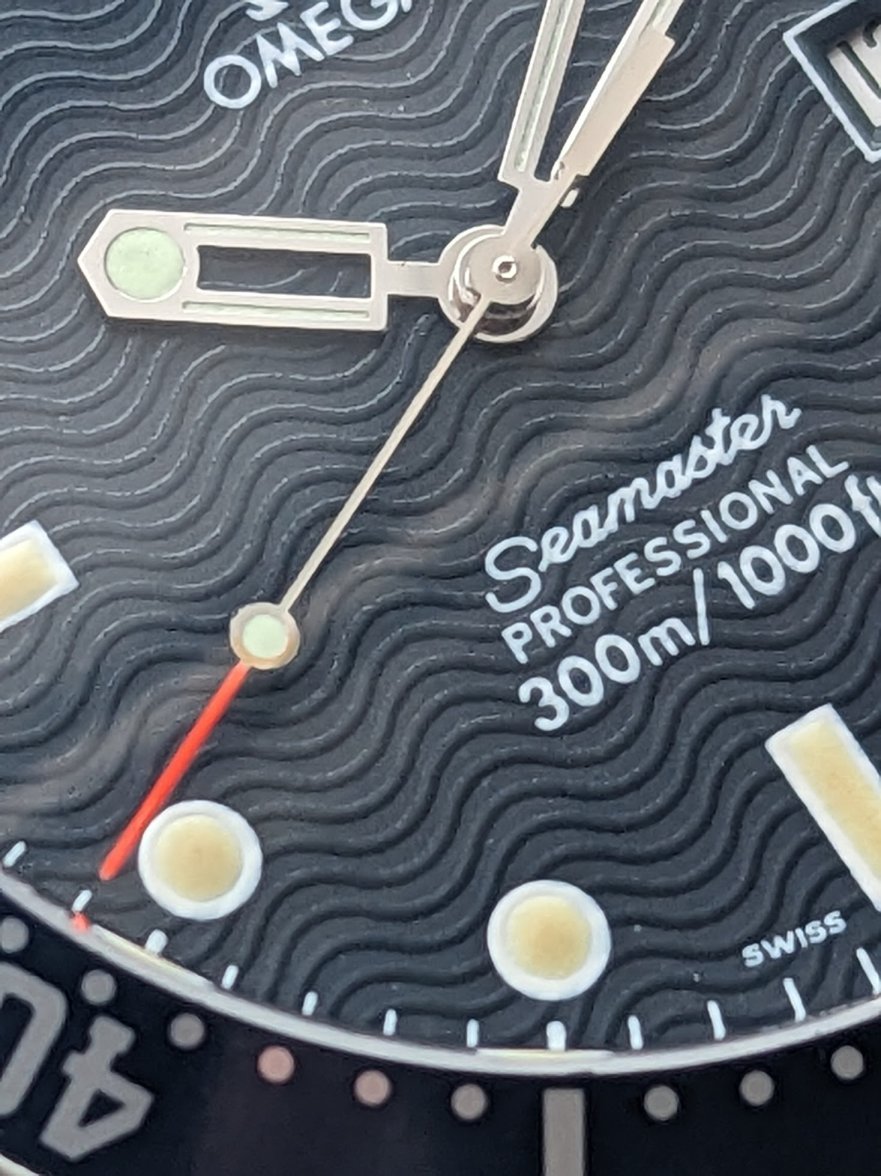
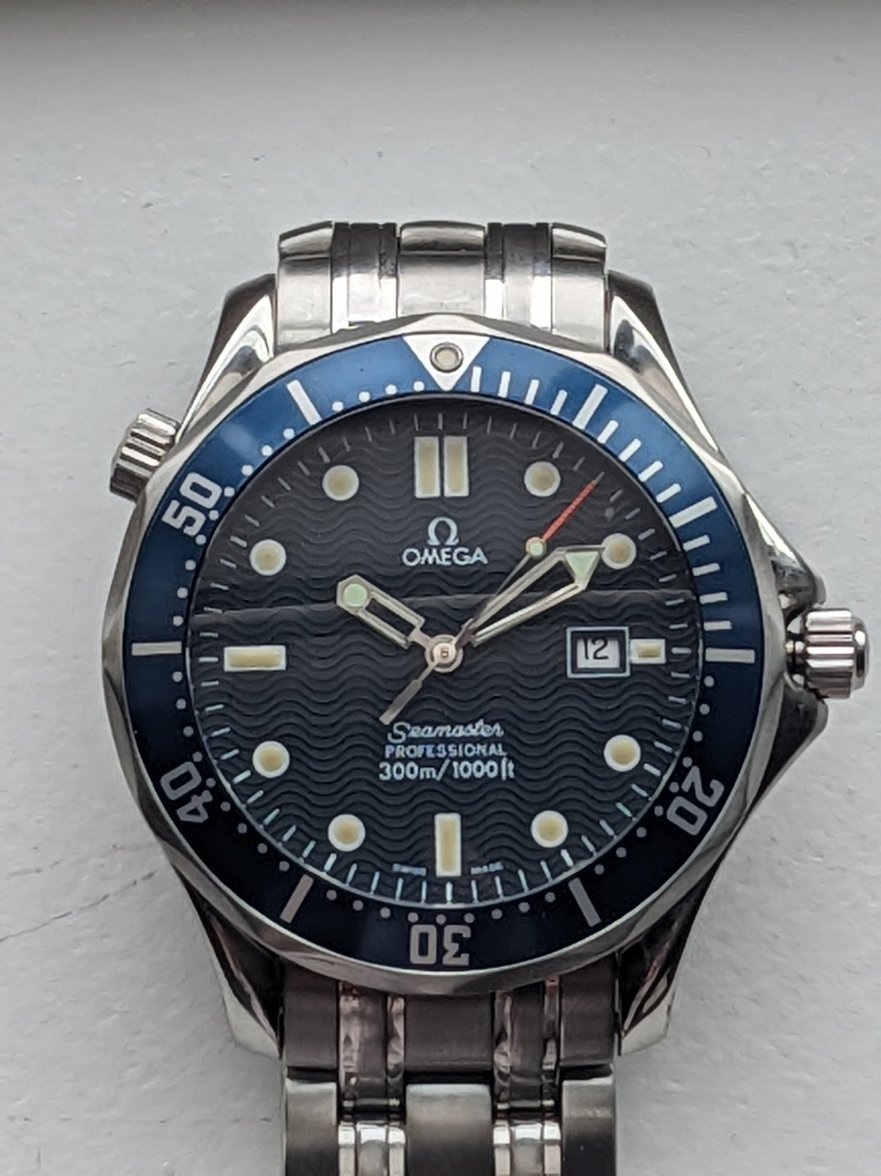

It's my first Omega, and I was pretty certain it was authentic. Seller was reputable, I've never seen a fake of a 2541.80 reported. Typical giveaways on other model fakes such as date window, font of dates, sharp corners of bezel numbers, position of the helium valve, all look correct. When I purchased it, I knew the dial was the Luminous version, so I expected it to be 1998 or newer. What I didn't realize at the time of purchase was that the 5553xxxx serial number meant it was a 1995-1997 era, which used Tritium.
I'm not sure if it may have had a dial replaced. Its Luminova has a patina, as expected for a 20+ year-old watch. It is very bright for only a few seconds after using a UV light, fades almost entirely within 10 seconds, and basically nothing left after a minute.
The only oddities I noticed at purchase time were the brushing marks on the sides of the watch and the circular brushing on the case back were not there, but I figured this was due to someone over-polishing it. I also wondered if the bezel and/or bracelet were replaced because they have less signs of wear yet the watch had been polished extensively. I'd like to know what others think of the dial vs serial dating and its condition.
I'll attach photos of the watch in various lighting conditions to show details and flaws. Many of the photos are max zoom with the phone camera, which seems to have caused some oddities in the photos, let me know if you'd like other specific photos.
Thanks.













Edited:
